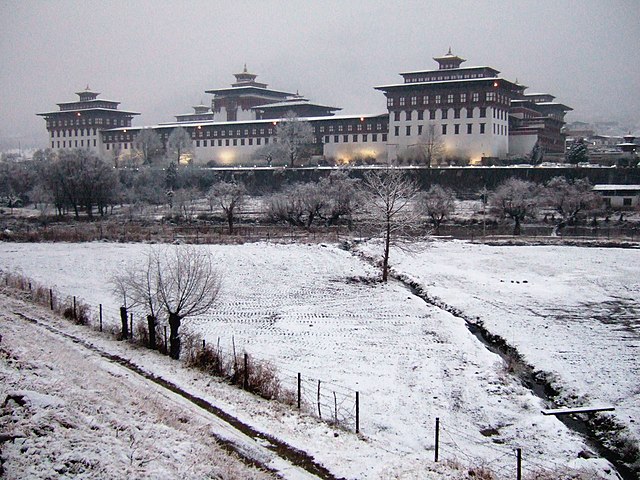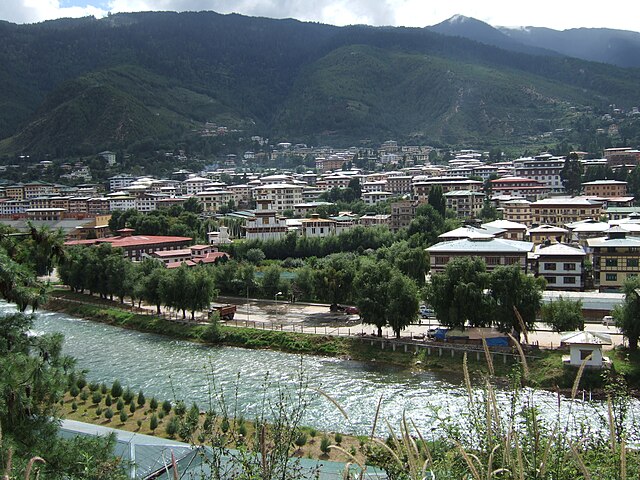Cradled in the folds of the Himalayas, Bhutan has relied on its geographical isolation to protect itself from outside cultural influences. A sparsely populated country bordered by India to the south, and China to the north, Bhutan has long maintained a policy of strict isolationism, both culturally and economically, with the goal of preserving its cultural heritage and independence. Only in the last decades of the 20th century were foreigners allowed to visit the country, and only then in limited numbers. In this way, Bhutan has successfully preserved many aspects of its culture, which dates directly back to the mid-17th century.
A music parade in Bhutan.
Bhutanese Buddhist monk looking out the window of a monastery.
A dzong (Trongsa).
Bhutanese women of Tibetan descent in traditional clothing.
Thimphu is the capital and largest city of Bhutan. It is situated in the western central part of Bhutan, and the surrounding valley is one of Bhutan's dzongkhags, the Thimphu District. The ancient capital city of Punakha was replaced by Thimphu as capital in 1955, and in 1961 Thimphu was declared as the capital of the Kingdom of Bhutan by the 3rd Druk Gyalpo Jigme Dorji Wangchuck.
Image: Tashichödzong Thimphu 2008 01 23
Image: National Library Thimphu Bhutan 2008 01 23
Image: Thimphu view 080907
Image: Thimpu Bazar 31








